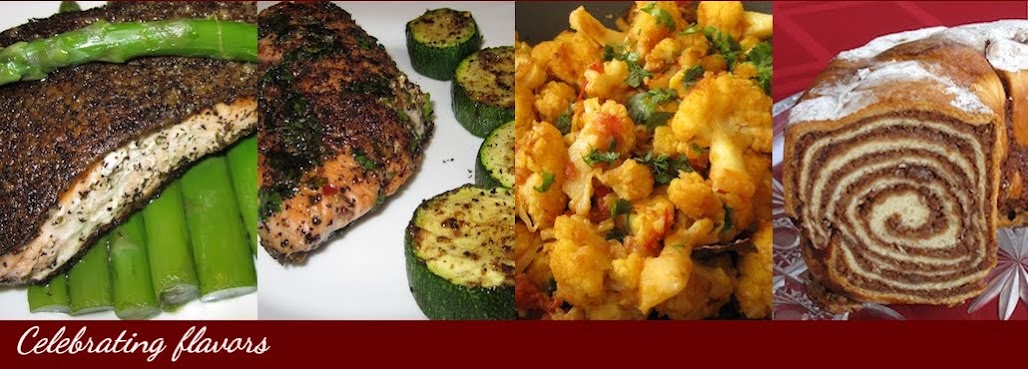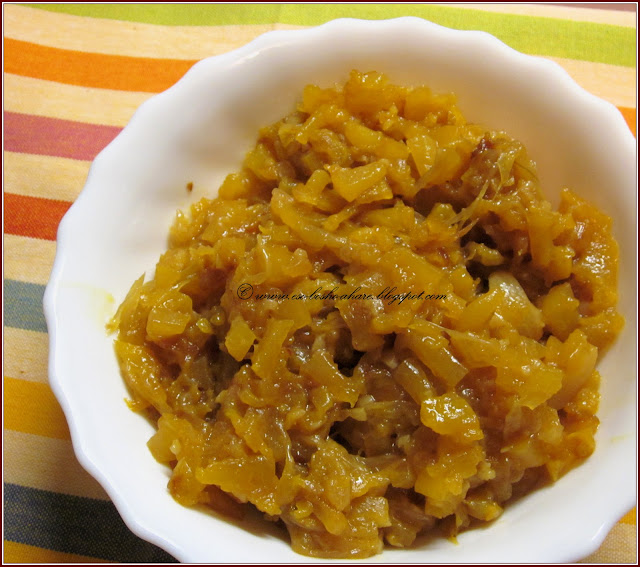Bhate, meaning ‘in rice’, is what we call any
vegetables boiled in the pot of cooking rice. In Bengal, we have all sorts of
bhate. Potato, pumpkin, okra, different gourds, everything could be a bhate.
Instead of boiling the vegetables separately, mothers, grandmothers would put
inside some vegetables in same pot while cooking rice. They did know how to
save energy! Then when it is done, keep the rice aside. While, mashing the
vegetables with a bit of mustard oil, salt, and green chili would make the
quickest and tasty side dish ever. It
had been long that I have had a bhate. Therefore, I decided to use a bit
of the pumpkin that was left from the 6kg one in the garden for a bhate.
I was cooking pumpkin in all sorts of Bengali styles, so why not a boiled
pumpkin dish. The day before, I had made ghee (clarified butter), and saved the
milk solids. I love using it with rice. I had to cook the aromatic gobindobhog
rice, a small grain sticky variety of aromatic rice. Wow, how delicious it was!
The mellow sweetness of pumpkin spiced up with the heat of the chili was
heavenly to eat with the fragrant rice and the subtle hint of fat.
You can print the recipe for your kitchen here: PRINTABLE RECIPE
INGREDIENTS:
(Serves 2)
200g pumpkin
1sp mustard oil
1 green chili thinly sliced
Salt
Sugar
METHOD:
1.
Leave the pumpkin as large pieces. Put it in
boiling water along with rice grains while cooking rice.
2.
After rice is done, take out the pumpkin pieces
and let it cool a bit.
3.
Mash well with green chili, mustard oil, salt
and a pinch of sugar.
NOTE:
Any vegetable can be used instead of pumpkin.
The vegetable can be boiled on its own instead of doing it
with the rice.
Though the taste from mustard oil cannot be replaced, in
case of unavailability, olive oil or butter or anything similar can be used.




















.jpg)

